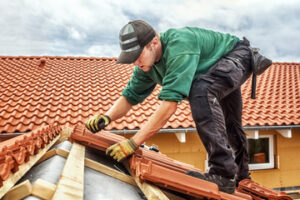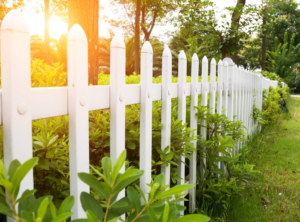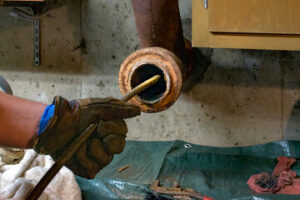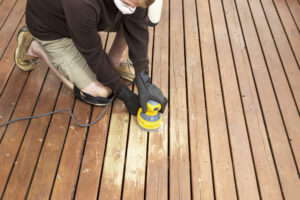Security cameras provide valuable evidence to support law enforcement efforts. They also promote accountability among workers, contributing to a safe work environment.

Solar-powered and wireless construction security camera systems minimize system downtime and are less vulnerable to power outages or intentional disconnection. They can be mounted at job site front doors or entries to detect movements, mishandling and thefts even at night. Keep reading the article below to learn more about Construction Security Camera.
The busy, noisy, and often dangerous environment of a construction site makes it a natural target for theft, vandalism, and safety violations. To combat these challenges, it’s critical that the right security measures are in place. Security cameras for construction sites are silent sentinels that help weave a safety net around the site, protecting both people and property.
When selecting a construction surveillance system, it’s essential to consider what features and capabilities you need for your particular jobsite. For instance, you may want a camera with night vision capability to ensure visibility at the darkest times. Or, you might need one that activates only when motion is detected so that you can quickly identify and alert the right personnel. You also need a system that can withstand harsh weather conditions as well as the dust and debris often present on construction sites.
Additionally, it’s important to look for a camera that offers remote access and monitoring so that you can keep an eye on the jobsite even when you are not there in person. Some models offer this through mobile apps or web interfaces, allowing you to check in on the site from any location at any time. You may also want to look for a model that has alarm sensor integration so that your camera can notify you and others in the event of an incident.
AI enhancements are another powerful tool that can make your construction security camera more effective by actively monitoring the site in real-time for potential security threats. Powered by advanced video analytics, these technologies can detect unusual behavior like loitering or suspicious activity and trigger real-time alerts to respond rapidly. This reduces response times and ensures a proactive approach to security. In addition, they can also automate the process of logging and analyzing data captured by the camera.
Resolution
Security cameras offer a variety of features, but one key element that can make or break the image quality is resolution. When selecting a camera for your jobsite, it’s important to understand what resolution means and how it affects video clarity.
Resolution is represented in pixels, and the higher the resolution, the more detail a camera can capture. For example, a camera with 1080p resolution has 1920 horizontal and 1080 vertical pixels, or approximately two million pixels total. Higher resolutions like 5MP or 8MP offer a higher level of detail, but also require more storage space for recording footage.
Many cameras also feature night vision capabilities, which are essential for construction sites that operate around the clock and need to be monitored in low-light conditions. Additionally, some cameras come with infrared (IR) sensors that can detect the heat emitted from objects, even in complete darkness.
Depending on the needs of your site, you may want to select a camera with a wide-angle lens that can cover large areas, or a narrow lens that focuses in on specific points of interest. For example, if you are monitoring an entrance or exit of a property, it’s ideal to have a high-pixel count camera that can clearly identify license plate numbers.
It’s also important to keep in mind that the monitor on which you’ll be viewing your footage will play a role in how clear the images are. It’s recommended to get a monitor that matches or exceeds the resolution of your camera, as this will ensure that you’re seeing all of the footage in the best possible quality.
Coverage
Video surveillance can help prevent theft and vandalism of construction equipment, materials, tools, and vehicles. It can also help to improve safety and boost productivity on the site. However, to reap the full benefits of a surveillance system, it’s important to choose the right camera configuration and ensure adequate coverage.
The best security cameras for construction sites offer flexible and versatile coverage, enabling you to keep tabs on the status of your project at all times. Look for cameras with high-resolution, weather resistance, and durable designs that can withstand the tough environments common to construction sites. Invest in a system that offers remote monitoring capabilities so project managers, security personnel, and others can access live camera footage from anywhere, providing real-time insights into the status of a site. This feature can also enhance emergency responses, allowing for faster and more efficient investigations into accidents and security incidents.
A reliable security camera should provide sufficient storage capacity for recording and playback of footage. It should also be able to support integrations with other security systems and access control systems on the construction site. Wired systems require a physical connection to power and network sources for optimal performance, while wireless cameras are a good option for smaller construction sites or locations where running cables is challenging.
Consider camera options with sound capabilities that allow for communication with trespassers or other individuals who may have entered restricted areas of the construction site. Many cameras with this functionality have speakers that can be activated to warn unauthorized visitors or play pre-recorded messages to deter them from re-entering the site.
Make sure the camera system you select complies with local laws regarding data protection and privacy. By adhering to applicable laws, ensuring that your video surveillance system is used responsibly, and prioritizing the rights of those on the construction site, you can harness the power of video surveillance to protect your assets, prevent theft, and promote safety and productivity. Contact our team of experts to discuss your security needs and determine the best construction security camera solution for you.
Storage
The weather can be tough on cameras, so look for construction security cameras that are designed to withstand the elements. This includes cameras that are waterproof and dustproof. They should also be resistant to temperature fluctuations, such as those that can occur due to seasonal changes. A durable construction camera should also be easy to clean. This will help reduce the risk of clogging, which can cause the device to fail and stop working.
The type of power source a construction camera uses will also impact its reliability. Choosing one that relies on solar energy is an excellent option because it is sustainable and eco-friendly. This kind of camera can also be used in remote areas that don’t have stable electrical infrastructure.
Another type of power option is a battery-powered camera. These types of cameras are typically rechargeable and can operate for a long time on a single charge. They are a good choice for construction sites in remote locations that can’t access electricity.
In addition to identifying potential theft and safety risks, surveillance can help track progress on construction projects. This can help managers identify any delays or bottlenecks in the process and take proactive measures to keep the project on schedule.
Many construction sites are home to expensive materials and equipment that can be attractive targets for thieves. A reliable construction camera can deter theft by providing a clear view of the property and alerting employees if suspicious activity occurs.
The cost of a construction security camera can vary greatly depending on its features, resolution, and storage capabilities. For example, onboard storage in the form of memory cards may have a limit and require regular maintenance while cloud storage offers unlimited storage but incurs ongoing costs. It’s important to consider the total cost of ownership when selecting a construction security camera. Clarity matters when it comes to surveillance, so opt for high-resolution cameras that deliver crisp and detailed footage. In addition, regular cleaning of the camera lenses is essential to ensure that the images remain clear and visible. This can be achieved by using a soft, lint-free cloth or specialized cleaning tools.







